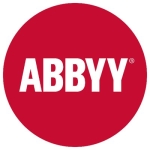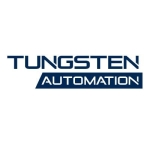What is our primary use case?
Our company is an implementation partner for Automation Anywhere, and XLNC Technologies is a consulting organization for whom I work. I am the head of delivery operations.
We are working with around 14 clients who are on Automation Anywhere. We have been able to recommend and further resell starter and enterprise packs. Implementations performed by us scale up from one bot to 10 bot runners
My primary use case for Automation Anywhere would be the one which yields higher ROI , has repetitive tasks to be performed and doesnt involve fuzzy logic for sure . Cases that we have achieved success are extraction of data from PDF's , SAP automation, AD Integration, Integration with CRM and Payment links, KYC documents and web scrapping. Listed are low hanging fruits and will boost confidence of the stakeholders in the RPA deployment , recommend to look at such use cases when looking at Automation Anywhere and its implementation.
How has it helped my organization?
I have worked in Dubai, and we implemented RPA for one of the major retail giants. We started out with one process (bank reconciliation) and scaled up to almost 200 bots in six months. Sales was improved by at least by 80 percent.
During the Dubai shopping festival, there were big launches that happened on the sales/retail domains. Bots compared products with other competitors, looking at the pricing ranges then locating the price for your own product, then bringing them to the home page for easy access. All these sort of changes were managed by bots. It had a direct impact on the customer lifecycle.
In my current implementation, which is happening in India, with the poker companies, if you played poker, then you would have observed when you are trying to make out a cash-out if you don't get your cash-out in four to eight hours that you tend to get worried about the poker game in which you were playing. One of the use case that we received was to go ahead and make cash-outs almost on a real-time basis along with the tax deduction. Because in India, there are tax deductions which happen. Before, it used to take almost a day to go ahead and get the tax deducted. Then, the cash-outs were being made in eight hours. Now, it is happening in one to two hours. This boosts the customer confidence and experience. When the customer experience increases, obviously sales will increase.
What is most valuable?
Automation Anywhere has multiple features in it. If you could look at the agnostic tools that are available on the market, almost everybody has a similar features, but Automation Anywhere has quite a secure platform. It is highly encrypted.
It is highly scalable on cloud and virtual machines.
What needs improvement?
Automation Anywhere is a tool. It is not able to go ahead and extract the hand-written documents. Most of the automation tools that we have in the market are not able to get an accuracy of close to 80 to 90 percent on hand-written documents. So, I'm eagerly looking at a release from Automation Anywhere, wherein they could plug in an LP or look at some sort of a platform which could convert hand-written documents into a readable format. If they could bring in they own platform, this would make a big in-roads for the entire automation industry.
If it is able to integrate with any plug-ins available on the market which could read hand-written documents, that would be good. IQ BOT is one cognitive bot that they have launched, and if they could extend this particular cognitive bot to hand-written documents, then they would have an edge over other automation giants already in existence.
Recently, they launched the business analytical dashboard, which is cutting-edge. We can see in real-time the business dynamics and the way the metrics are behaving when the bots are being run. If we could have a ready-made application allowing for input processes and metrics into it. Then, it provides the approach that you should take to start the automation and when the process should expect to be completed.
Automation Anywhere already has bots stores and digital workers being enabled on the website. Instead of putting it on the website, if a couple of digital workers could be made inherent in the tool itself, then the customer who is buying the package gets an edge over other partners or other vendors. E.g., if Automation Anywhere could package a digital worker along with my existing tool, as sort of an add-on, then that would add value to my package. Similarly, if I am from SCN, maybe an SAT module digital worker could add value.
There are hundreds of codes or utilities available. 60 percent just go down the drain and are never used, because there is no utility towards them. If they did something like Amazon, a pay-as-you-go, to get a digital worker, it would be cutting-edge technology. This would save costs for me and would optimize my implementations. The same benefits could then be shared with my customers.
For how long have I used the solution?
More than one year.
What do I think about the stability of the solution?
Stability is an important part of the product. It has accolades across the globe. If it did not, stable companies in the tech and finance industries wouldn't have gone for it. It's stable because it's highly scalable on cloud and virtual machines. The codes developed in Automation Anywhere don't tend to go back, skip, or miss out.
The current version launched is 11.3. We are more comfortable with 11.3 now. However, the earlier version, 10.7 was good to work with, but since there even newer version coming, we work with 11.3 for now. Version 11.3 does have some bugs, but they are manageable because there is a good technical support team provided by the Automation Anywhere. We haven't had any major hiccups.
The moment that you start having access levels missing or security is being quite stringent about not opening a couple of bots, they are not providing admin access rights nor providing accesses to VPNs, that's when the stability issues come in. Then, we start blaming that the application stability, which in fact is wrong, because you are not meeting the prerequisites.
What do I think about the scalability of the solution?
Other tools tend to give me exceptions when I am scaling them on the cloud. While the infrastructure might be available, systems won't be able to talk to each other. The codes tend to miss paths, and sometimes codes are not getting applied in the application. However, with Automation Anywhere, we haven't seen any such issues until now, wherein large scale developments are being found to be unstable.
The good thing about Automation Anywhere is the website has a detailed architecture which talks about having a load balancer and how you can scale up.
Currently, I have been working with clients in the US and Dubai through remote support. I have been developing bots remotely where I have been able to access their virtual machines. The virtual machines are separate for creators and runners. I have around six creators on virtual machines, which is good enough to start off. There are around 25 runners which are deployed on 25 VMs. This is in US. That's how we are operating them, and it's the largest setup that we work on.
In India, clients start small. They start with a starter pack, which is only allowed to be issued by an implementation partner. If you go onto the Automation Anywhere website, there is nothing called a starter pack. So, organizations will tend to start small with a starter pack, which may come in a bundle of two or three creators, one runner, and one controller. They want to test how it is functions in their organization. If they can pick up low hanging fruit, which means if they're picking processes which are smaller but high in volume, then they will have higher ROI. Then, these organizations tend to jump onto an enterprise level deployment in a maximum of six months. That is the trend that we have seen.
However, the moment the client starts going big and is not able to get the right ROI in place, that's where they tend to start dropping the ball. Then, they start looking for another RPA software or decide RPA is not for them.
How are customer service and technical support?
I have been receiving good technical support them, and hence I'm sitting on the sidelines. This is because if I didn't get the right support along with the right documentation and KMS, then I would not be able to fix issues first on my own. If I'm not able to do this, then relying on the technical support would be the last thing that I would do. The technical support that Automation Anywhere provides is fantastic, especially their acknowledgment and response times. Their knowledge base articles are quite descriptive. You will be able to fix issues on your own if you are quite tech savvy. Even if you are not, then they're quite detailed enough to follow.
If you don't get the right support, then there is an escalation channel available which you can reach out to. There is a community, where get solutions. There doesn't seem to be any issues with the support currently being provided by Automation Anywhere. I find them quite responsible and available whenever I have issues.
How was the initial setup?
It is quite straightforward doing an initial setup of Automation Anywhere. This is because it has a well-defined installation guide which talks about how to install Automation Anywhere software. However, automation only works when IT support is quite adequate. So, if the IT and infrastructure teams at the client site are not supportive, for example, then I'm not able to provide admin rights or open security ports. That is when the entire installation moves into a messy state. There is a way to cater to such issues. Because this is a new technology coming, if you meet with the IT support team along with the CISO of that particular organization and set the right context and objective that company wants to achieve with automation, this roadblock can be fixed.
Otherwise, I haven't faced any issues with the setup.
What about the implementation team?
We start off with the planning phase. Then, we go into the asset process gathering phase. We map it along with data gathering, wherein we gather data about the collaterals, the documents which are required in the process, standard operating procedures (SOPs), user login credentials, access rights, and business logics. Once that is done, we recommend a target operating model. Once approved by the business, that's when we start development. We start doing regression testing when post development is over. Finally, we do the handover the new app to the customer operations and can deploy the bot.
If I have to do a process discovery, which includes understanding the data gathering and creating an address process map, it takes a maximum five to ten business days (simple process). It takes this amount of time because the SME has to give me their time, and I never get all the information that I need in one shot since there are a lot of business and technical exceptions that I have to cater to. I have to be quite inquisitive in asking in the process, then the process gaps and the exceptions. I have to make a map, follow up with a sign off, then get it close.
A medium level complexity project can take 25 man days and a complex process could take a least a month and a half.
If I am deploying eight to ten processes in a span of six months, I need maximum three developers. If I'm developing out 50 bots in six months, then I need 20 developers.
Once the bots are deployed, I need a support team which works in three shifts. My support team would consist of a solution architect and three developers spread across three shifts. The monitoring team would consist of a solution architect and one or two IT support people. This is for a large scale bot development. If it is a smaller scale deployment, a smaller support team is needed for monitoring.
What was our ROI?
We have saved customers 400% in terms of time saved by implementing this product.
We implemented automation in an HR domain. We had 60 percent reduced error rates, 25 percent freed working hours, and the response time from the HR department was faster than before. We automated candidate screening, payroll automation and expense management. In finance and accounting, they had a reduction in 70 percent error rates, 35 percent working hours were freed, and there was improved satisfaction for the internal customers after the automation implementation. Finally, in IT, there was 90 percent is the reduced error rate, because in IT everything is binary.
What's my experience with pricing, setup cost, and licensing?
The pricing and licensing of Automation Anywhere plays an important rule in the Indian market because in the Indian market $10,000 USD is too much. Hence, the pricing tends to go down depending on the customer relationship with the partner: A starter pack is $10,000 and an enterprise pack is $100,000. If you go through an implementation partner, you can get good deals. They can save some money.
An annual contract is really beneficial for support.
Which other solutions did I evaluate?
I have been working in RPA for almost two to three years now. We started off with Softomotive. Then, we began working with UiPath and Automation Anywhere.
We have (or are currently working on) PoCs with WinAutomation, WorkFusion and Blue Prism.
The biggest difference between Automation Anywhere and their competitors are the spread that they have. You don't need to look out for testimonials on why to use Automation Anywhere. There are big giants who are already using it. The feature list that they carry with them makes them stand out. Their industry first bot, IQ Bot (a cognitive bot), has already won an award for the best technology deployed in 2018. It goes in and extracts data from invoices and applies machine learning if the data is not set to the right columns, putting it back to the right columns, then goes ahead and extracts data from purchase invoices.
What other advice do I have?
It's the best product that we have at this moment.
Start small. Don't take big steps if you are automating.
Disclosure: My company has a business relationship with this vendor other than being a customer: Partner.





















